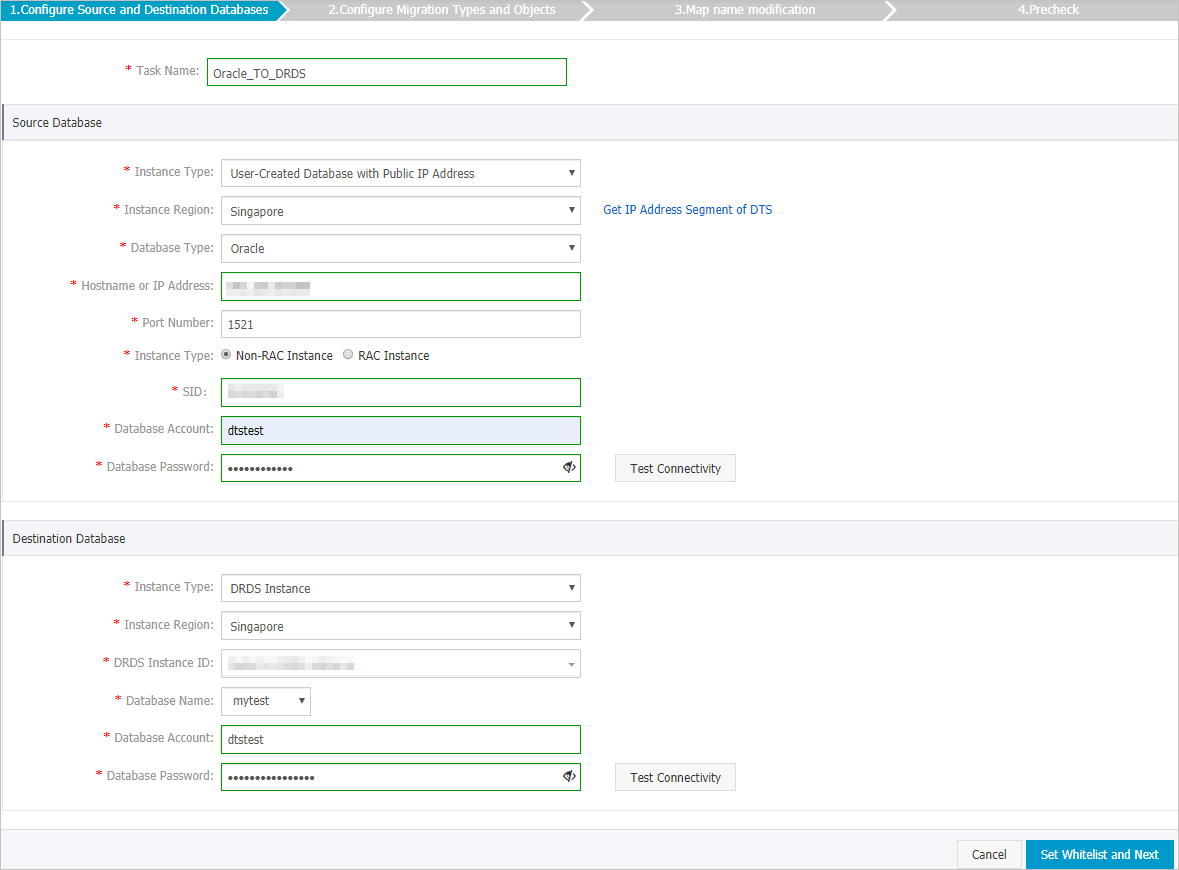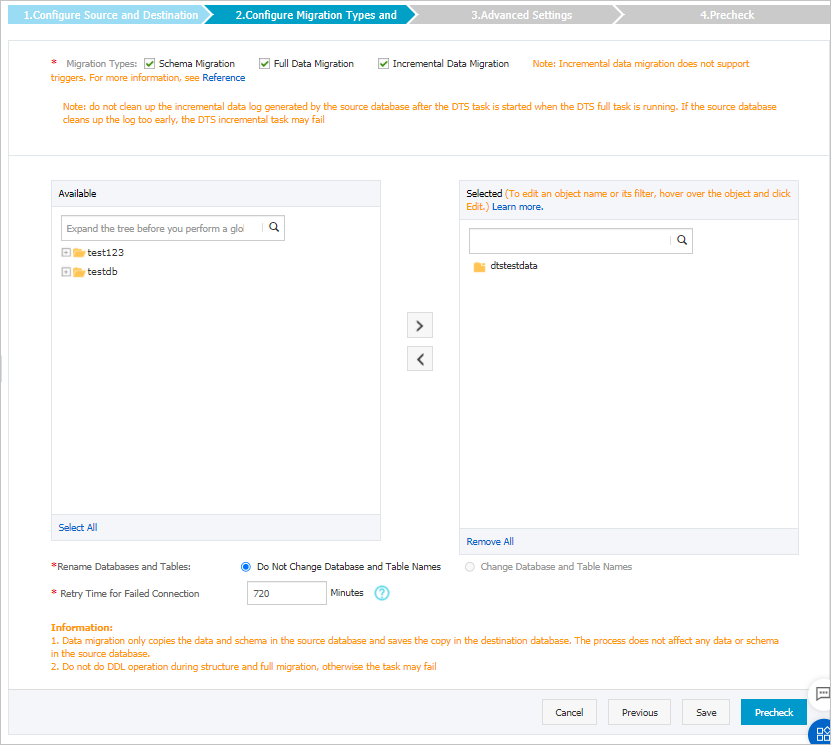Section | Parameter | Description |
N/A | Task Name | The task name that DTS automatically generates. We recommend that you specify a descriptive name that makes it easy to identify the task. You do not need to specify a unique task name. |
Source Database | Instance Type | The access method of the source database. In this example, User-Created Database with Public IP Address is selected. Note If you select a different instance type, you must set up the environment that is required for the self-managed database. For more information, see Preparation overview. |
Instance Region | If you select User-Created Database with Public IP Address for the instance type, you do not need to set the Instance Region parameter. Note If a whitelist is configured for the self-managed Oracle database, you must add the CIDR blocks of DTS servers to the whitelist of the database. You can click Get IP Address Segment of DTS next to Instance Region to obtain the CIDR blocks of DTS servers. |
Database Type | The type of the source database. Select Oracle. |
Hostname or IP Address | The endpoint that is used to connect to the self-managed Oracle database. In this example, the public IP address of the database is used. |
Port Number | The service port number of the self-managed Oracle database. Default value: 1521. |
Instance Type | The architecture of the source database. If you select Non-RAC Instance, you must specify the SID parameter. If you select RAC or PDB Instance, you must set the Service Name parameter.
|
Database Account | The account of the self-managed Oracle database. For information about the permissions that are required for the account, see the Preparations section of this topic. |
Database Password | The password of the database account. Note After you specify the information about the source database, you can click Test Connectivity next to Database Password to check whether the information is valid. If the information is valid, the Passed message appears. If the Failed message appears, click Check next to Failed. Then, modify the information based on the check results. |
Destination Database | Instance Type | The instance type of the destination database. Select DRDS Instance. |
Instance Region | The region in which the destination PolarDB-X 1.0 instance resides. |
DRDS Instance ID | The ID of the destination PolarDB-X 1.0 instance. |
Database Account | The database account of the destination PolarDB-X 1.0 instance. For information about the permissions that are required for the account, see the Preparations section of this topic. |
Database Password | The password of the database account. Note After you specify the information about the RDS instance, you can click Test Connectivity next to Database Password to check whether the information is valid. If the information is valid, the Passed message appears. If the Failed message appears, click Check next to Failed. Then, modify the information based on the check results. |
 Elastic Compute Service (ECS)
Elastic Compute Service (ECS)
 Container Compute Service (ACS)
Container Compute Service (ACS)




 icon in the
icon in the  to go to the previous version of the DTS console.
to go to the previous version of the DTS console.

 icon to move the objects to the Selected section.
icon to move the objects to the Selected section.  icon next to each failed check item to view the related details. Fix the issues as instructed and run the precheck again.
icon next to each failed check item to view the related details. Fix the issues as instructed and run the precheck again.






















